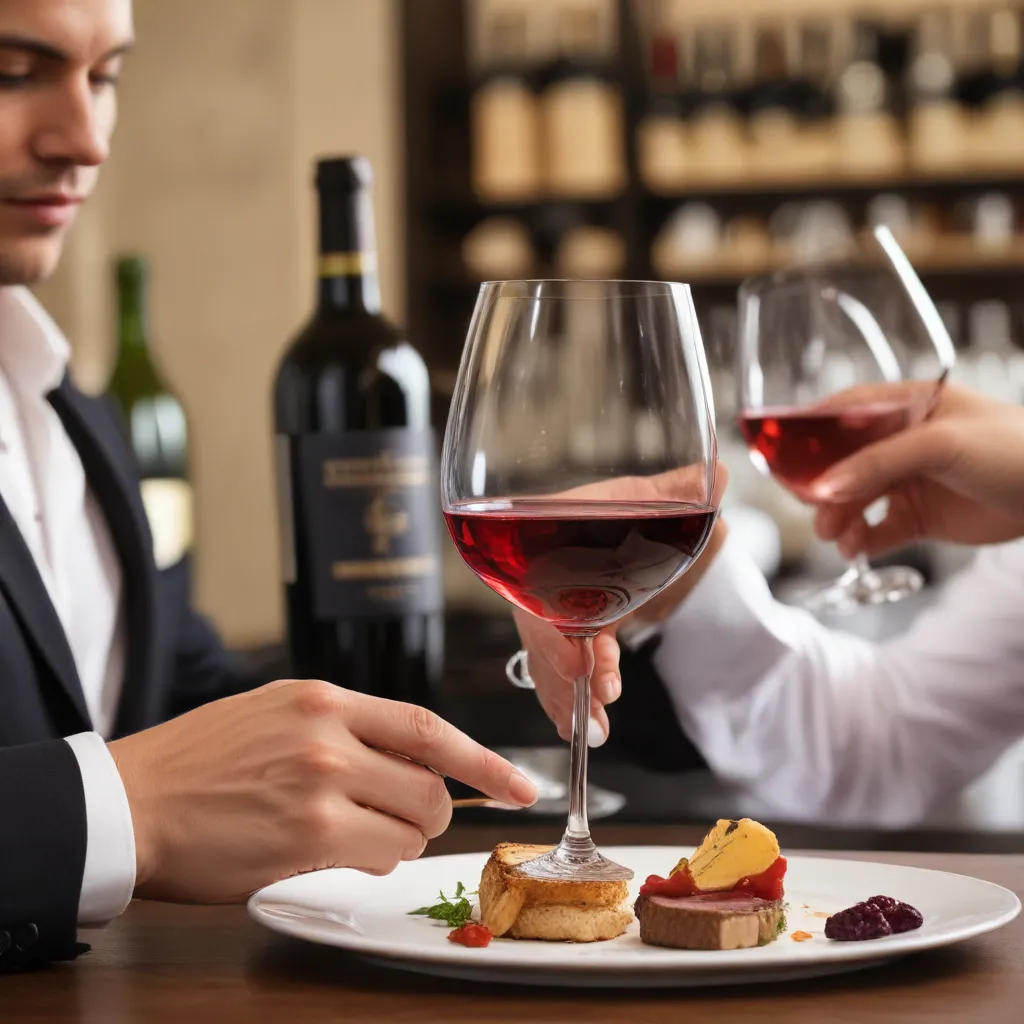
In the world of fine dining and exceptional wine experiences, the art of food and wine pairing is a delicate dance, where the interplay of flavors and aromas can elevate a meal to new heights. At the Wine Garden Inn, we take this culinary art form seriously, constantly exploring the science behind the perfect pairing. From the complexities of taste and aroma to the sommelier-level techniques that unlock hidden flavor synergies, join us as we delve into the fascinating world of flavor compatibility.
The Fundamentals of Flavor Pairings
The Science of Taste and Aroma
At the core of any successful pairing lies a deep understanding of the human senses of taste and smell. While the traditional five tastes – sweet, sour, salty, bitter, and umami – are well-known, the role of aroma in shaping our perception of flavor is often underestimated. As wine and food expert Beth Liston explains, “Smell accounts for up to 80% of what we perceive as ‘taste.’” This profound interplay between taste and aroma is the foundation upon which masterful pairings are built.
The Role of Sommelier Expertise
Skilled sommeliers are not merely wine enthusiasts; they are flavor alchemists, trained to navigate the intricate world of food and wine pairing. Their expertise lies in understanding the unique flavor profiles of various wines, as well as the complementary or contrasting effects they can have when paired with specific dishes. By drawing upon their deep knowledge of viticulture, winemaking, and culinary trends, these professionals are able to craft pairings that unlock hidden depths of flavor, elevating the entire dining experience.
The Principles of Flavor Compatibility
At the heart of successful pairings is the concept of flavor compatibility. As Christy Velasquez, a seasoned sommelier, explains, “It’s not just about finding wines that ‘go well’ with a dish; it’s about understanding the underlying principles that govern how flavors interact and complement each other.” These principles include balancing acidity, sweetness, and bitterness, as well as considering the interplay of texture and mouthfeel.
The Art of Food and Wine Pairing
Flavor Profiles of Wines
Each varietal of wine possesses a unique set of aromatic and taste characteristics, from the robust tannins of a Cabernet Sauvignon to the delicate floral notes of a Riesling. Mastering the ability to identify these flavor profiles is a crucial skill for any sommelier, as it allows them to select wines that will harmonize or contrast with the flavors of a particular dish.
Complementary and Contrasting Pairings
When it comes to food and wine pairing, there are two primary approaches: complementary and contrasting. Complementary pairings seek to enhance and amplify shared flavor notes, while contrasting pairings balance opposing characteristics, such as pairing a bold, spicy dish with a crisp, refreshing white wine. The choice between these approaches ultimately depends on the desired outcome and the specific flavors involved.
Considering Texture and Mouthfeel
Beyond just taste and aroma, the texture and mouthfeel of both the food and the wine play a crucial role in successful pairings. A delicate, flaky fish may pair beautifully with a light, acidic white wine, while a hearty steak calls for a full-bodied, tannic red. Mastering the interplay of these physical sensations is a hallmark of sommelier-level expertise.
Unlocking Flavor Synergies
The Interplay of Taste Sensations
The science of taste is a complex and fascinating realm, with each of the five primary tastes – sweet, sour, salty, bitter, and umami – playing a unique role in shaping our perception of flavor. When these taste sensations are combined, they can create synergistic effects, amplifying or balancing one another in unexpected ways. Understanding these interactions is key to unlocking the full potential of a pairing.
Understanding Flavor Compounds
At the molecular level, the flavors of both food and wine are composed of a vast array of chemical compounds, each contributing to the overall taste experience. By understanding the specific compounds present in a dish or a wine, sommeliers can identify potential points of compatibility or contrast, guiding them toward the perfect pairing.
Balancing Acidity, Sweetness, and Bitterness
The delicate balance of acidity, sweetness, and bitterness is a critical factor in successful food and wine pairings. A highly acidic wine, for example, can cut through the richness of a creamy dish, while a touch of sweetness can temper the bitterness of certain ingredients. Mastering this equilibrium is a hallmark of sommelier expertise.
Sommelier-Worthy Techniques
Tasting and Evaluating Wines
The foundation of any sommelier’s pairing prowess lies in their ability to accurately taste and evaluate a wine. This involves assessing the wine’s aroma, flavor profile, body, tannins, and finish, all while considering the wine’s vintage, terroir, and winemaking techniques.
Analyzing Dish Flavors
Just as sommeliers meticulously analyze wines, they must also possess a keen understanding of the flavors and textures present in a given dish. This involves identifying the dominant taste sensations, as well as any subtle nuances that may influence the pairing.
Mastering the Art of Pairing
The ultimate goal of a sommelier is to create pairings that elevate the dining experience, unlocking hidden depths of flavor and harmony. This requires a mastery of the principles of flavor compatibility, as well as a keen intuition for how different elements will interact. Through years of training and experimentation, the finest sommeliers have honed their craft to a true art form.
At the Wine Garden Inn, we are proud to offer our guests a dining experience that is the culmination of this deep understanding of food and wine pairing. Our team of sommelier-trained experts work tirelessly to craft pairings that showcase the best of our estate-grown produce, local vintner collaborations, and the natural synergies between the culinary and viticultural arts. Whether you’re a seasoned oenophile or a curious foodie, we invite you to embark on a journey of flavor discovery with us.
